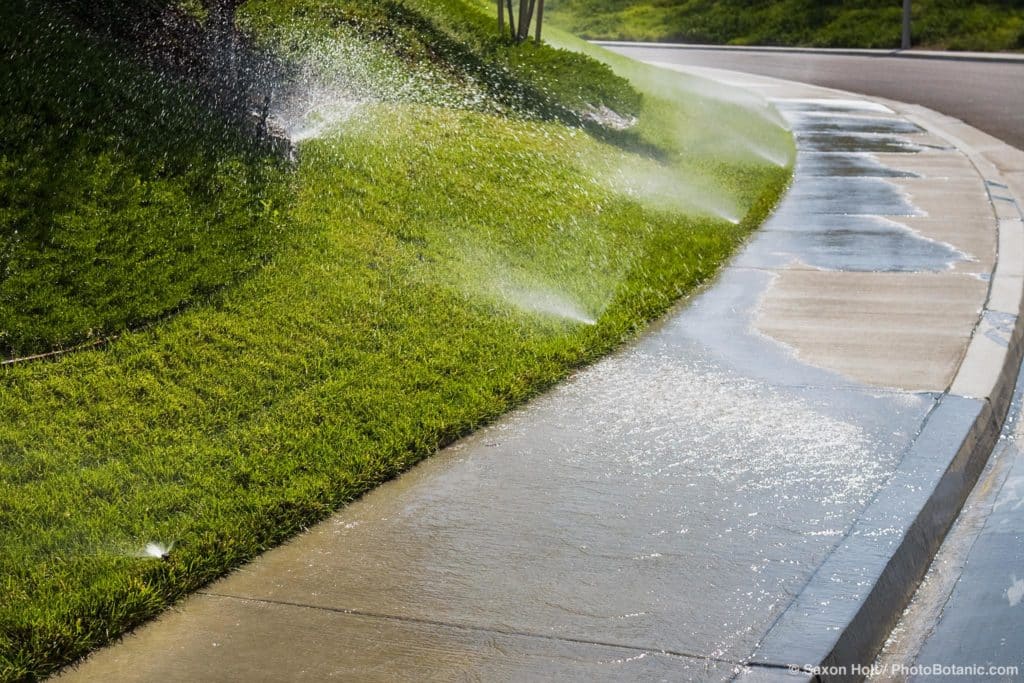
Supplemental water is critical for gardens. Even the most enthusiastic native plant gardener recognizes the urban environment is not natural and cannot support a beautiful, healthy garden without some irrigation, especially in dry years.
“Functional and attractive landscapes are essential to our quality of life, providing places to recreate and relax, cooling the environment around buildings, offering wildlife habitat, and creating places of beauty.” – Recommendations Report to the Legislature On Landscape Water Use Efficiency

“But the current drought is a reminder that the landscape designs we have brought to California, coupled with ingrained habits of water use, are not sustainable.”
In order to establish any realistic standard for sustainability, in the artificial municipal water environment where almost all our water, for farms, for drinking, washing, and gardening comes from reservoirs that must also allow for river flows and ecosystem viability, we must have fair regulation of the water we capture.
For gardeners in California, new regulations are coming and you have a chance to review and comment on them before they become law.
Recommendations are contained in a new Draft Report by the Independent Technical Panel, a State-mandated committee to study technologies and approaches to water use efficiency. The 63 page report is titled the Recommendations Report to the Legislature On Landscape Water Use Efficiency.
The recommendations of this report go directly to the State Legislature. Once revised and adopted, this will become the regulatory blueprint for the Department of Water Resources. Governor Brown’s Executive Order B-29-1 to save water in response to the drought has brought urgency to this report, which is currently accepting comments from the public until March 13.
You are the public, and if you have strong opinions, now is the time to to voice them.
Properly considered and written regulations are the foundation of efficient landscape water use. Despite the bureaucratic necessity of this process, it is vital to gardeners to work with the system to legitimize water for gardens.

I urge all interested professionals in the California garden industry to review and comment to Julie Saarre-Edmonds. Her e-mail is in the report. Read it. There is a special recommendation for photography – read on.
“The purpose of this report is to provide a comprehensive and complementary set of recommendations for adoption of the policies and practices that will make landscape water use far more sustainable than today.” The report is wide-reaching and covers:
> Turf Replacement Incentive Program
> Require Irrigation System Evaluations as Part of Home Inspections
> Model Water Efficient Landscape Ordinance (MWELO). The MWELO Ordinance drives almost all commercial and permitted landscape installations in California and includes things like regulations for Turfgrass Slope, Pool Covers, Evapotranspiration Adjustment Factors, Hydrozone Maps
> Rainwater Retention – require the retention of rainwater from roofs
> Product Standards for Irrigation Equipment
> Workforce Certification of Professionals
> Plant Labeling
> Public Perceptions and Social Norms
> Research Needs and Support
This last item, Section 10 of the report, recommends continued support and upgrades to the WUCOLS database. This database provides evaluations of the irrigation water needs for over 3,500 plants used in California landscapes and is widely used for water calculations for professional garden installations.
“Feedback on the WUCOLS IV database from horticultural professionals has been overwhelmingly positive,” but “feedback from the general public has been less positive than from the horticultural professionals, for the general public lacks the horticultural knowledge of plant appearance and cultural information.”
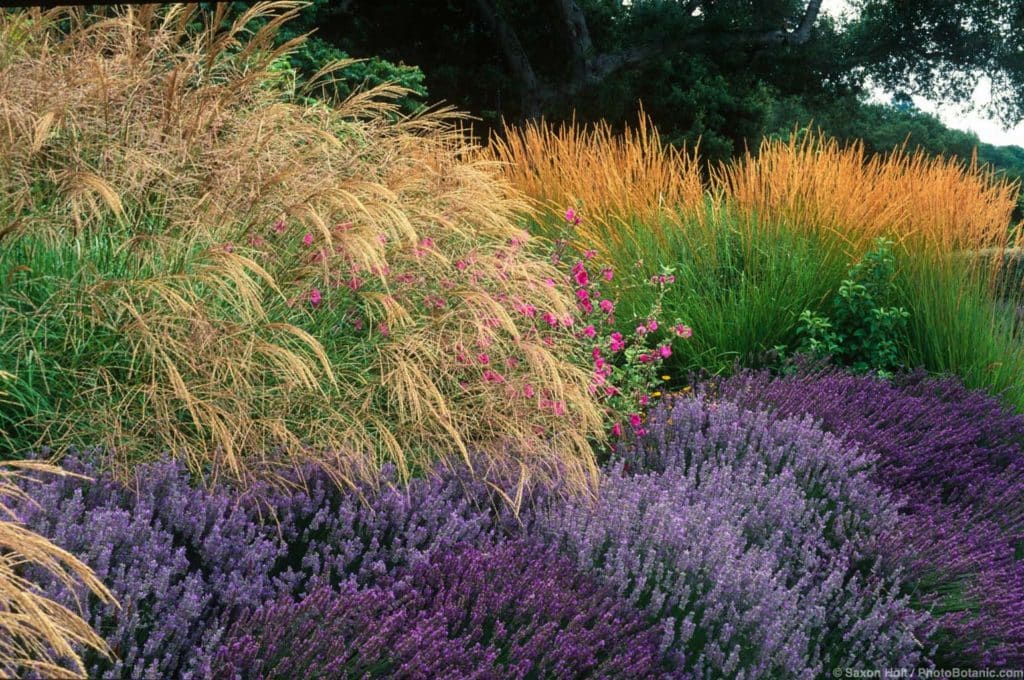
How might we encourage the general public and the average gardener to use WUCOLS and learn better gardening practices, to be more efficient with landscape water use in California’s summer-dry climate ? By showing them the best plants in real gardens with plant descriptions – just as we do here at Summer-Dry – information the WUCOLS database currently lacks.
“Thus, the addition of plant photographs and plant descriptions to the WUCOLS IV database is considered by the Independent Technical Panel to be a critical enhancement to WUCOLS, offering essential information to the gardening public for identifying and selecting waterwise plant material for California landscapes.”
It is extremely exciting to see this recommendation in the report, a dream that the Summer-Dry Project has been pursuing for years. We believe gardeners need this information to be inspired to create sustainable gardens. We need water for gardens.
While there is nothing in the report that says the Summer-Dry Project will be the supplier for “a) a photograph b) a narrative description, and c) key cultural information for each listed plant taxa in the WUCOLS database” we will certainly be working to be that supplier.
If you have read this far, please take a moment to make a written, email comment to this point in Section 10 of the report. Julie Saare-Edmonds email is in the report and must receive comments by March 13. Of course, if you have opinions about other proposed regulations this is the time let your voice be heard.
The report is here: Recommendations Report to the Legislature On Landscape Water Use Efficiency.
There is no need to mention the Summer-Dry Project, simply showing your support for an improved WUCOLS database with photos and descriptions. In truth, even if the Summer-Dry Project is not the eventual supplier, it is important to give gardeners better tools to create beautiful, climate-adapted gardens in California’s summer-dry climate.



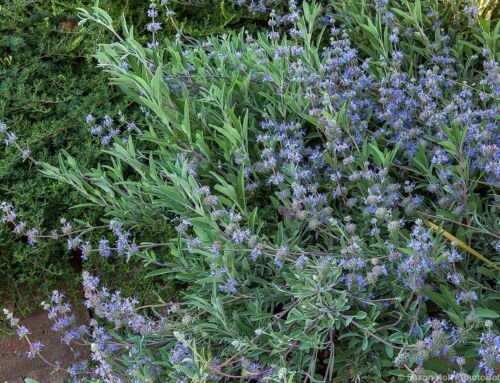
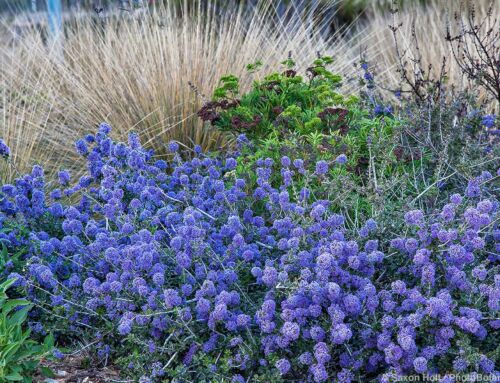
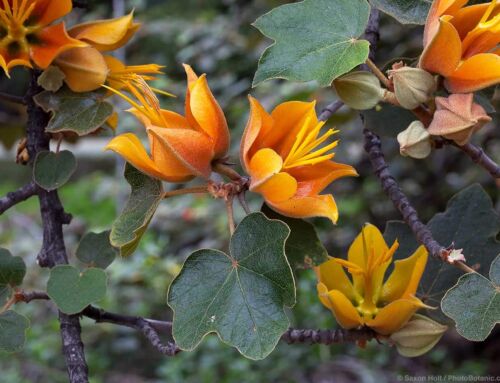
Leave A Comment